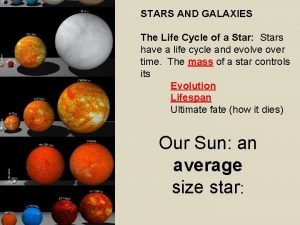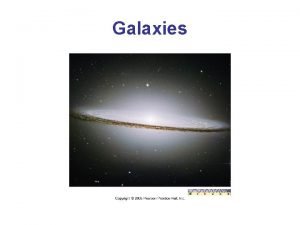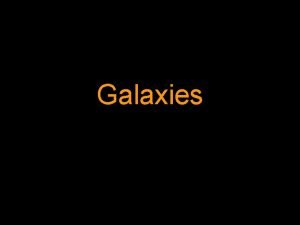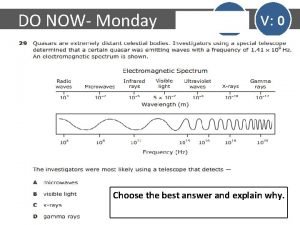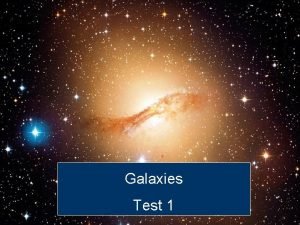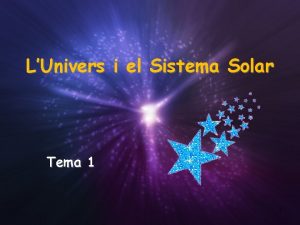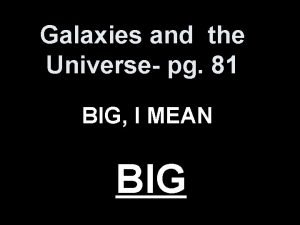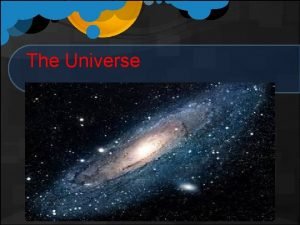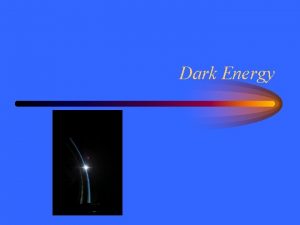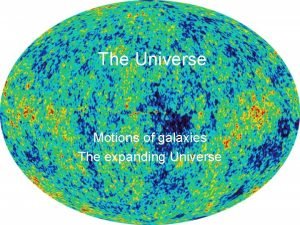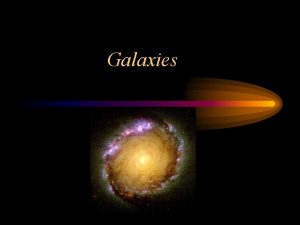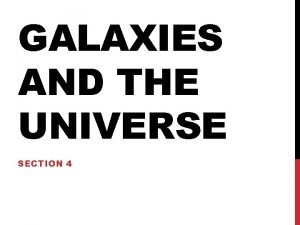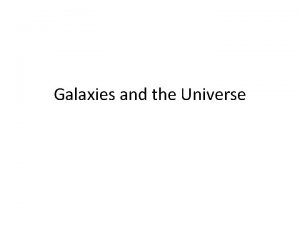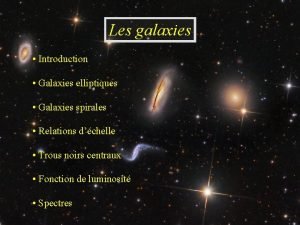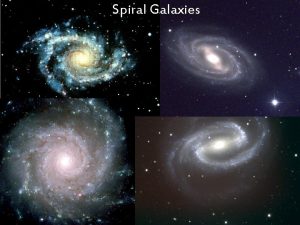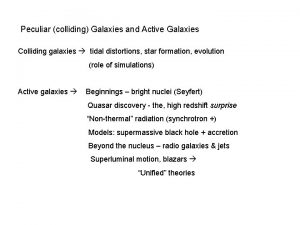Chapter 19 Galaxies Formation of the Universe Galaxies
















- Slides: 16

Chapter 19: Galaxies Formation of the Universe

Galaxies- Large groups of stars, dust and gas Edwin Hubble classified 3 galaxies: Spiral Galaxy- have a bulge at the center and spiral arms Ex. Our galaxy: Milky Way

What are two characteristics of spiral galaxies? What makes up the arms of a spiral galaxy? Spiral galaxies have a bulge at the center and spiral arms. The arms of spiral galaxies are made up of gas, dust and new stars.

Types of Galaxies

Contents of Galaxies 1. nebula- large clouds of duct and gas 2. Star clusters a. Globular cluster- group of stars that look like a ball b. Open cluster- group of stars located along the spiral disk of a galaxy

Origin of Galaxies Quasars- star like sources of light extremely far away -maybe the core of young galaxies that are forming

Formation of the Universe Cosmology- study of the origin, structure and future of the universe Big Bang Theory- states the universe began with a tremendous explosion 13. 7 billion years ago

How old is the universe? 1. Measure the distance from earth to various galaxies 2. Calculate the ages of old, nearby stars.

What will happen if the expansion of the universe continues forever? Stars will age and die and the universe will eventually become cold and dark.

Chapter 20: Formation of the Solar System 1. Solar system formed out of a vast cloud of gas and dust called nebula. 2. Nebula collapsed caused heating at the center, planetisimals formed in surrounding space 3. Central mass of nebula became sun. planets formed from surrounding materials.

The Sun: Our very own star Sun- a large ball of gas made mostly of hydrogen (H) and helium (He) - sun’s energy comes from nuclear fusion ( combination of the nuclei of small atoms to form a larger nucleus)


Sunspots Dark area cooler than the surrounding areas and has strong magnetic field - Can affect earth’s climate

Solar flares - Giant eruptions on the sun’s surface - Can interact with Earth’s atmosphere

Planetary Motion Rotation- spin of a body on its axis Orbit- path a body follows as it travels around another body in space Revolution- a body travels around another body in space

 Chapter 30 galaxies and the universe
Chapter 30 galaxies and the universe Formation initiale vs formation continue
Formation initiale vs formation continue What waves are produced by stars and galaxies
What waves are produced by stars and galaxies Life cycle of a galaxy
Life cycle of a galaxy Facts about elliptical galaxies
Facts about elliptical galaxies E irregulars
E irregulars The pity relation for an adiabatic expansion is
The pity relation for an adiabatic expansion is Critical density
Critical density What are galaxies
What are galaxies Brainpop galaxies quiz answers
Brainpop galaxies quiz answers 4 types of galaxies
4 types of galaxies How are galaxies classified? *
How are galaxies classified? * Elliptical, spiral and irregular.
Elliptical, spiral and irregular. Tipus de galaxies
Tipus de galaxies Type of galaxy
Type of galaxy Evolution of galaxies
Evolution of galaxies Universe pg
Universe pg



